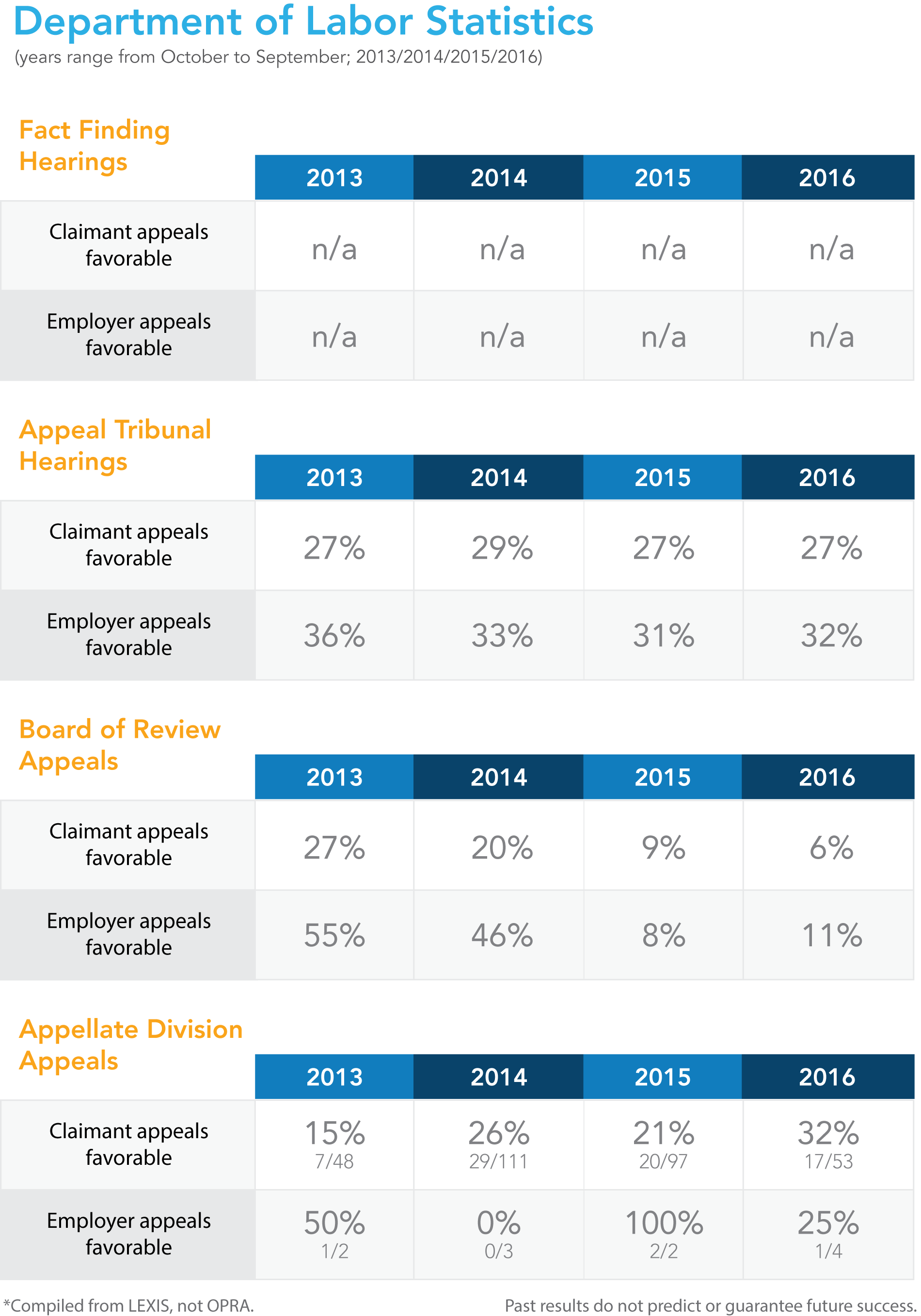UNEMPLOYMENT HEARING STATISTICS – YEAR END 2016
For the past few years we have been requesting statistics, via OPRA, from the Department of Labor in order to compare results from our firm with the overall averages of unemployment claimants filing appeals. For the fourth straight year, we are releasing the Department of Labor statistics and our firm’s statistics. The summary is as follows:
[row]
[span6]

[/span6]
[/row]
We have also compiled our firm’s statistics for calendar year 2016. Our statistics of past performance do not guarantee any future performance.
[row]
[span6]

[/span6]
[/row]
Analysis:
As the success rates of unrepresented claimants continues to drop, our success at the Department of Labor has continued to rise. The statistics reflect that the percentage of positive results obtained by our firm have been triple or better the average of all Appeals at every level. The 96% success rate at Fact-Findings and 90% success rate at Appeal Tribunals demonstrates that the safest way to ensure unemployment benefits remains retaining an attorney for all hearings.
During the year 2014 a dramatic shift occurred at the Board of Review level. Suddenly, the percentage of successful appeals on all Board of Review appeals dropped significantly. In 2012 and 2013, employers were winning Board of Review appeals at the rate of 55% or better. Reversals for claimants were 27% during that time. But for 2015, the rate of reversals was only 9% for claimants and only 8% for employers, and those numbers have dropped further. In 2016, only 6% of claimants won appeals at the Board of Review. Most appeals to the Board of Review are returned with a form opinion stating that the Appeal Tribunal was full and fair and its decision is adopted. Nevertheless, it is still required to appeal to Board of Review before filing an Appellate Division Appeal with the Superior Court.
At the Appellate Division, it was another strong year for claimants with 32.6% of claimant appeals resulting in reversal. This is the highest rate we have ever seen. This corresponds with the highest level of claimants who are being represented by counsel. It still makes a big difference to have an attorney at the Appellate Division. Although pro se appellants won 6 out of 26 appeals (23.1%), appellants with attorneys won 10 out of 28 (35.7%) and this firm’s success rate was 2 of 2 (100.0%).
All in all, the statistics for 2016 confirm the importance of having counsel at every level of the increasingly complicated and contentious unemployment process.